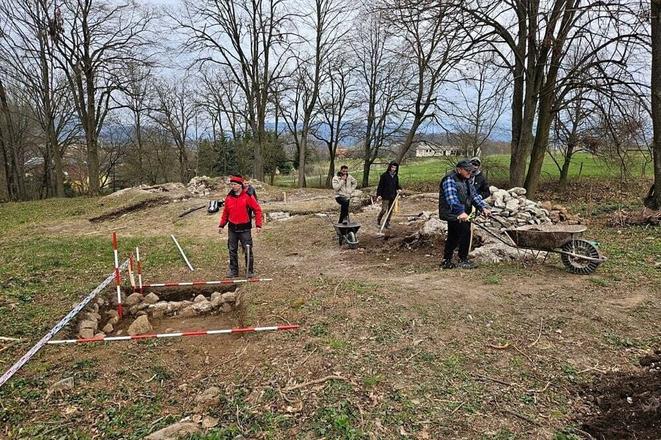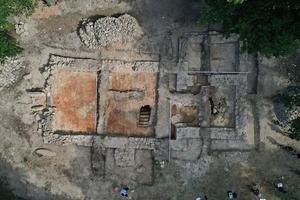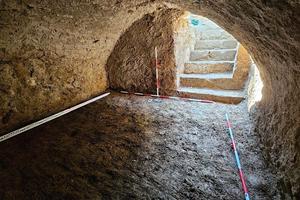Archaeologists have made a rare discovery at the site of the long-defunct Church of the Epiphany in the village of Ostrá Lúka in central Slovakia, uncovering new details about the mediaeval building.
This research marks the first of its kind in Slovakia in over 25 years, writes the My Zvolen website.
Led by archaeologist Ján Beljak, the team used geophysical surveys from 2011 to map the church’s floor plan, revealing a rectangular nave and presbytery, with a sacristy added in the 14th century. The building’s dimensions—17 metres by up to 8.7 metres—were unveiled through extensive excavation. Key architectural features, including multiple entrances and a crypt with a high-quality barrel vault, were also identified.
According to Beljak, the church was likely constructed in the late 13th century.
“The initial structure included a nave with a rectangular presbytery, while the sacristy and crypt were later additions,” he explained. The crypt, 2.7 by 2.9 metres, remains remarkably well-preserved, offering valuable insights into mediaeval burial practices.
In addition to the church, archaeologists discovered remnants of a fortification wall from the early modern period, which once enclosed the church and cemetery. They also found a tombstone at the church’s southwest corner and the lower part of a mediaeval baptistery.
This research builds on Ostrá Lúka’s rich historical landscape, which includes the mediaeval Peťuša Castle and the Renaissance manor house of the Ostrolúcky family, restored last year. In the Middle Ages, a trade route passed through Ostrá Lúka, and in 1393, a toll station was established here. The Church of the Epiphany is expected to become a new attraction along tourist routes, including the Barborská cesta route, which connects Ostrá Lúka with Peťuša Castle and other sites.
With these findings, archaeologists hope to deepen the understanding of Ostrá Lúka’s history and provide the local community with a greater appreciation of the region’s heritage.



 With the latest findings, archaeologists hope to deepen the understanding of Ostrá Lúka’s history. (source: Ján Beljak)
With the latest findings, archaeologists hope to deepen the understanding of Ostrá Lúka’s history. (source: Ján Beljak)


